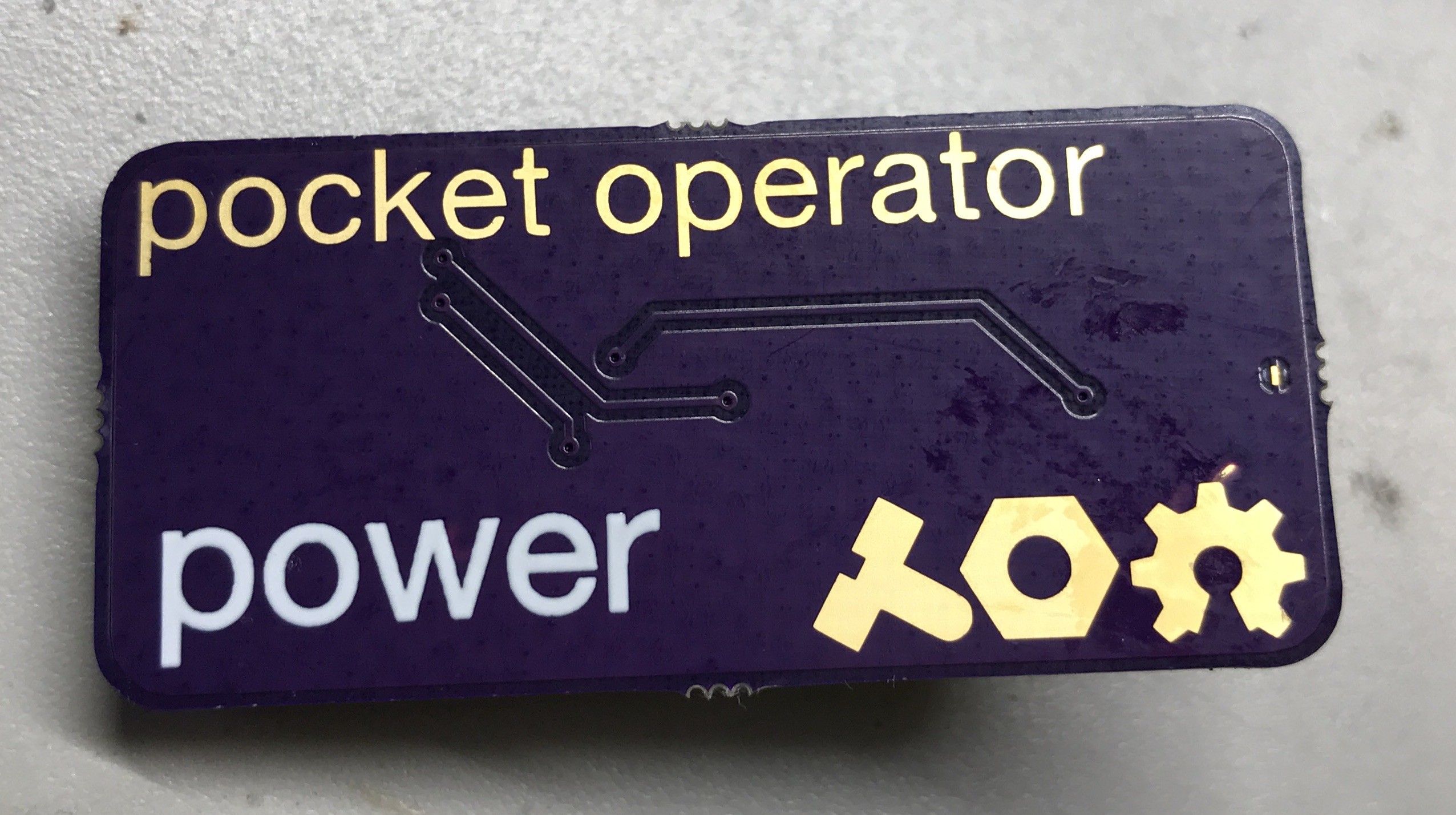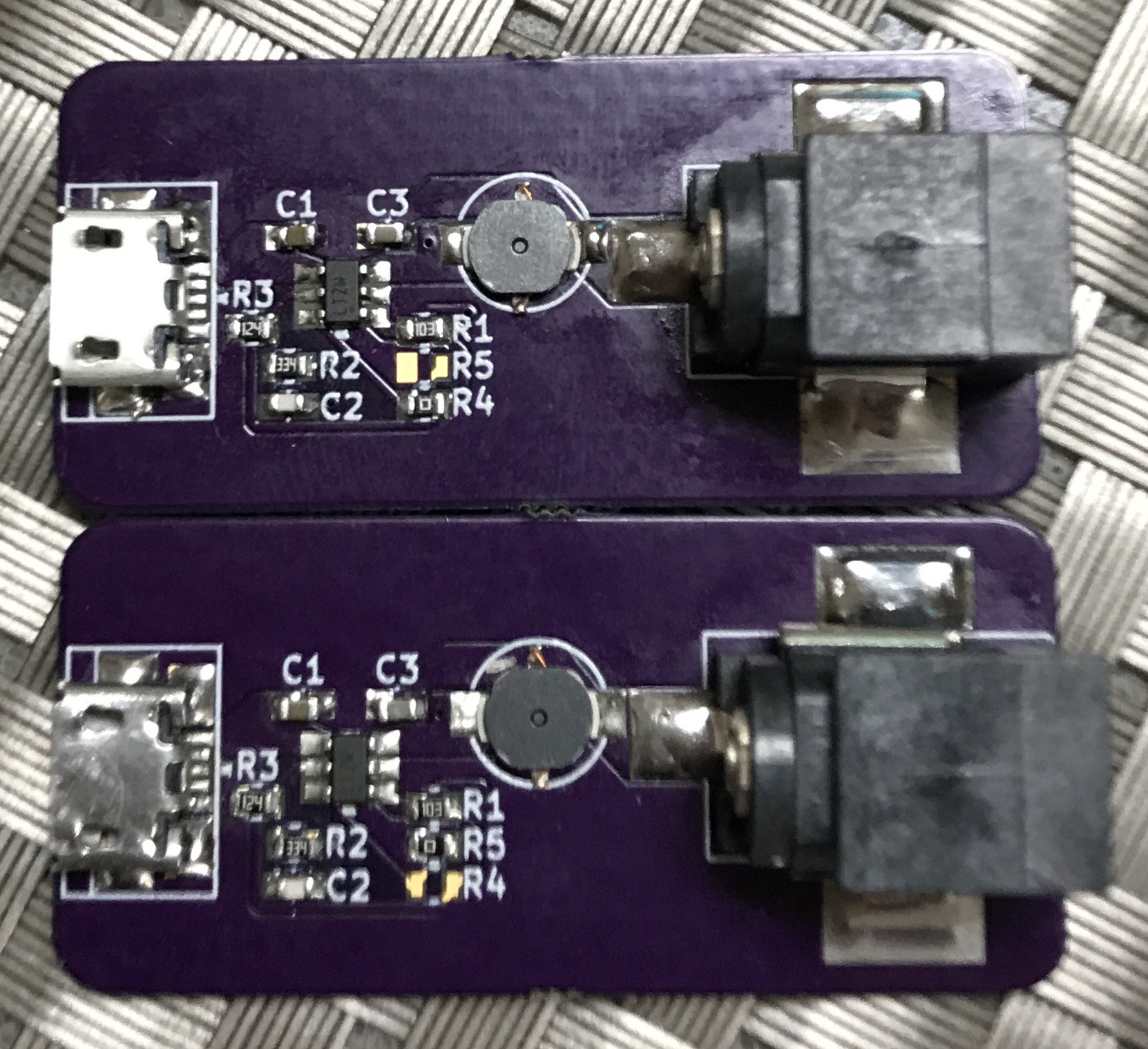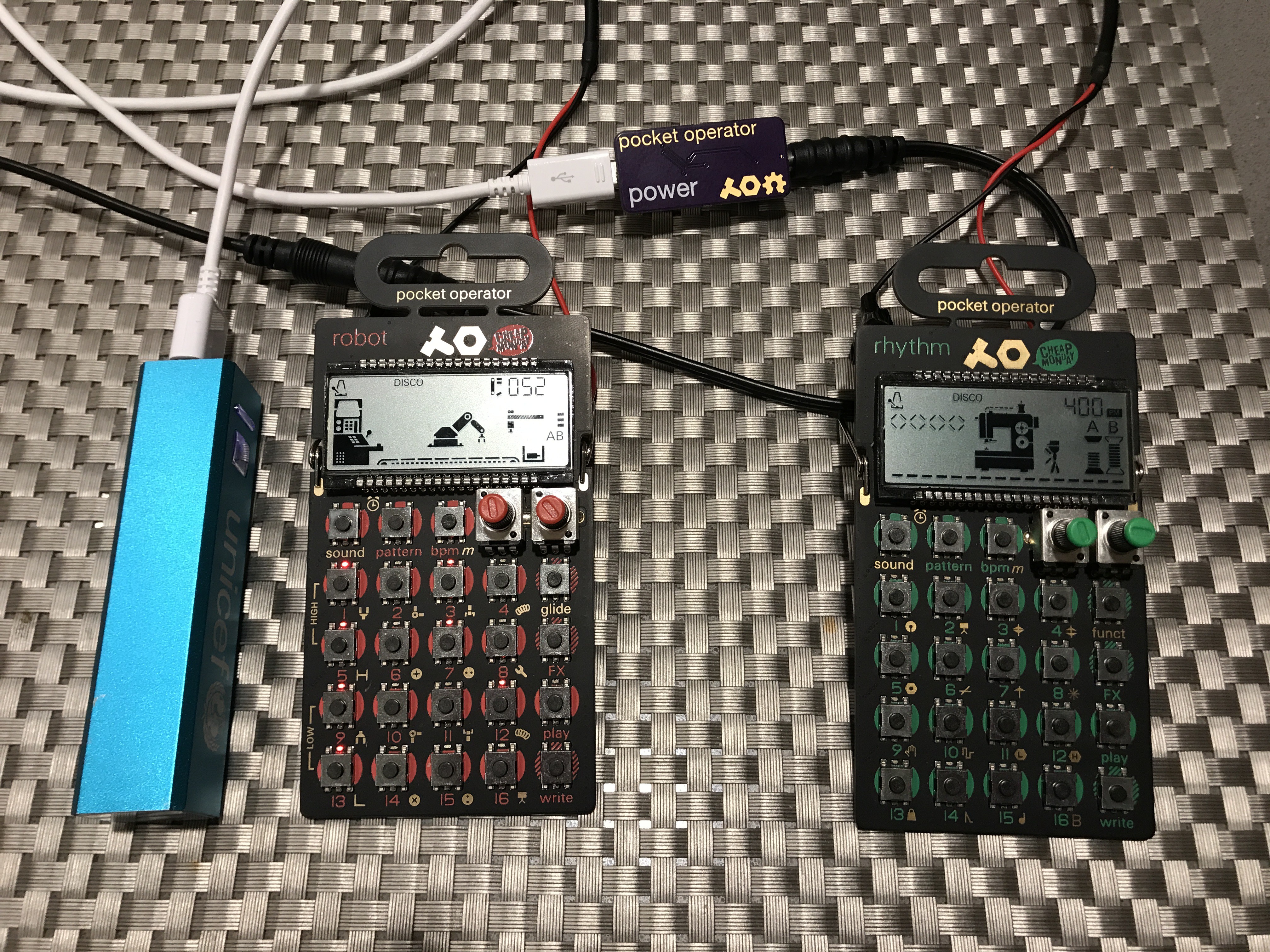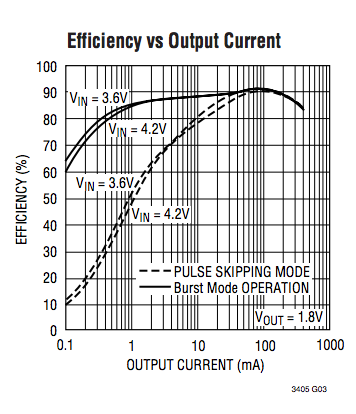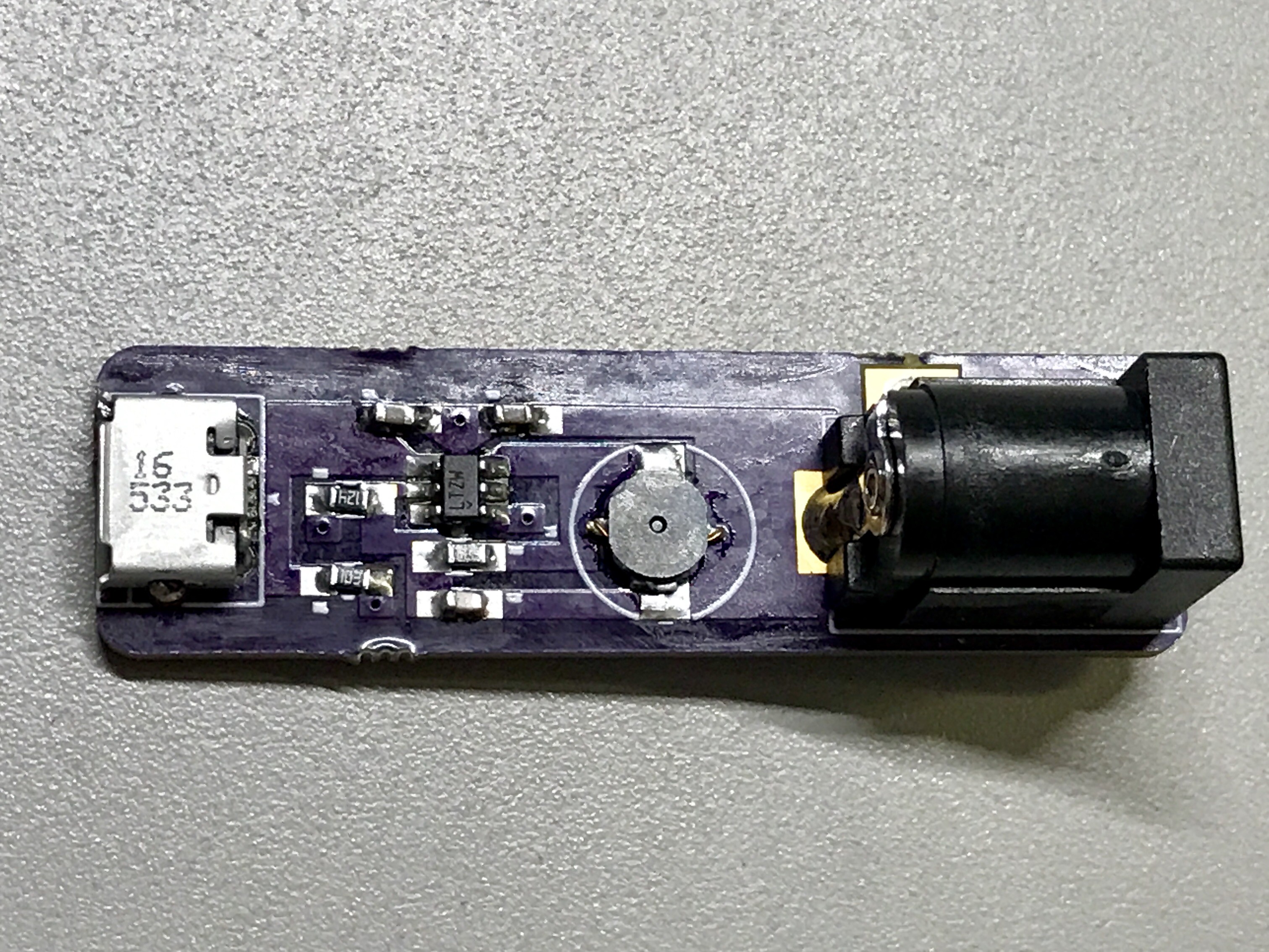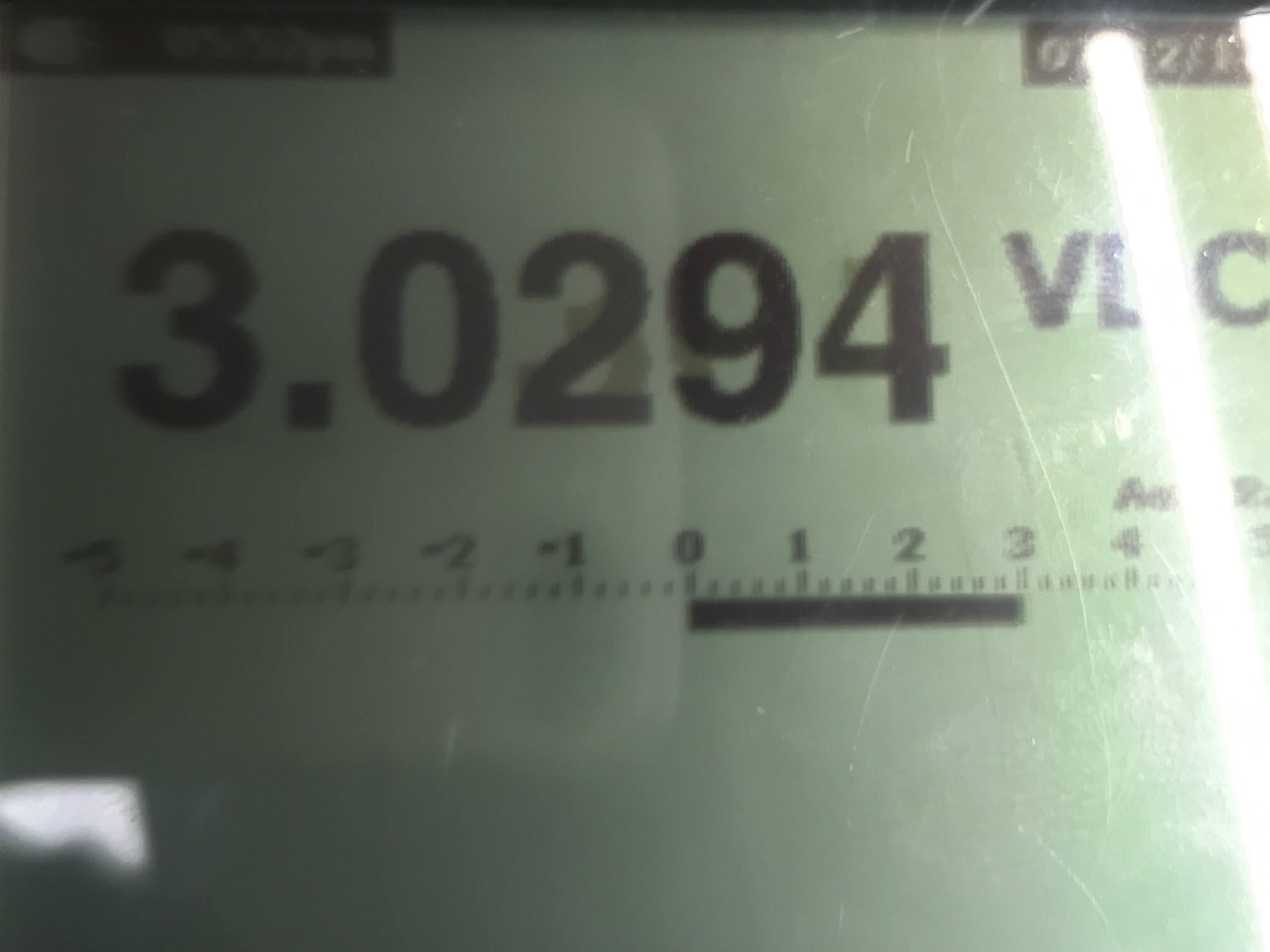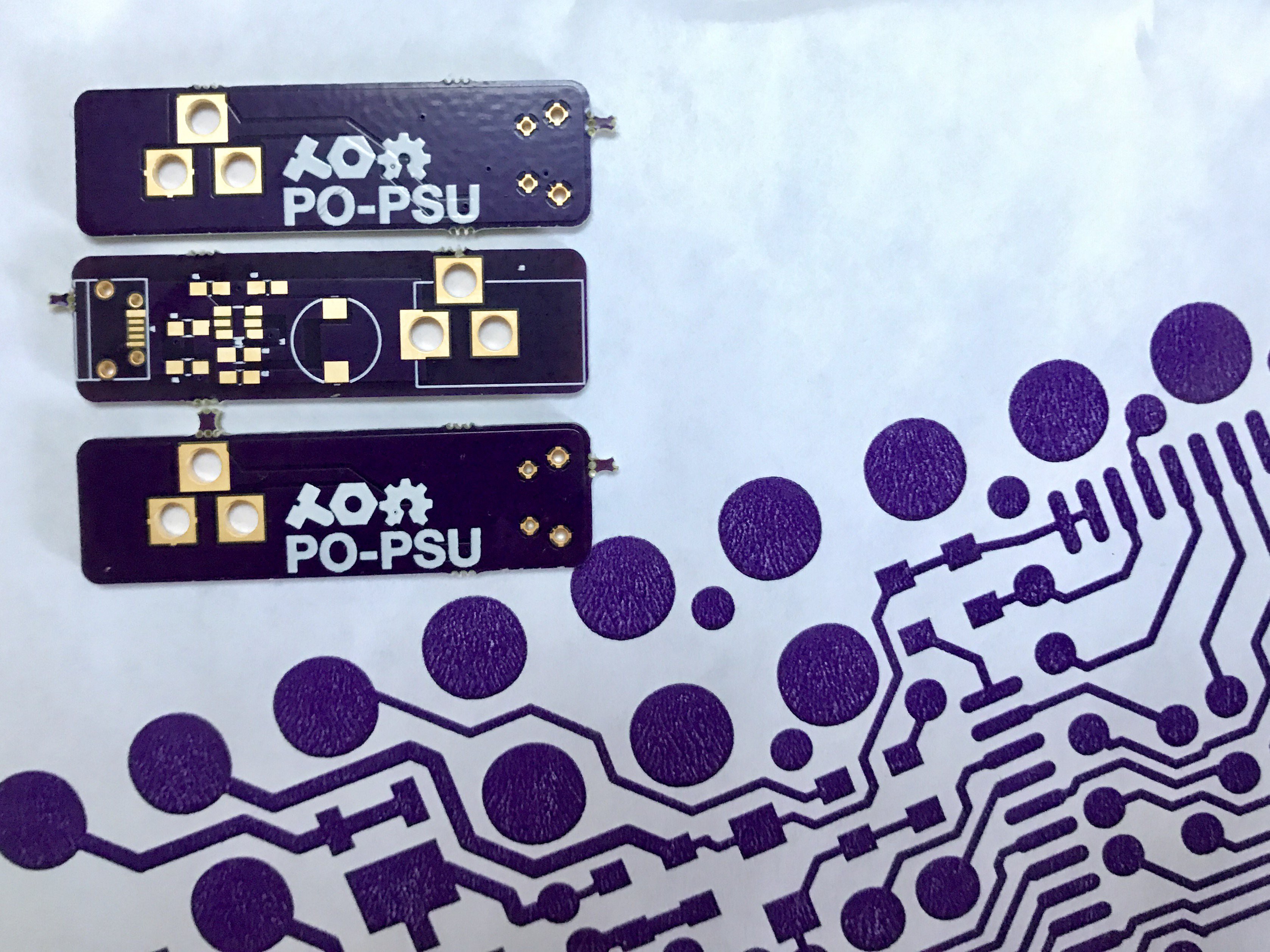-
Finished (abandoned)
08/10/2017 at 21:57 • 0 commentsI'm signing this project off as finished as I don't intend on doing another board revision, the second revision accomplishes the design goals. The remaining work I intend on doing is writing up about points of interest, and ensuring the BOM and CAD files are up to date.
Here are a couple of close-ups of the second revision:
I used exposed copper on the bottom to replicate the pocket operator visuals.
Two versions of the hardware exist: one with burst mode enabled and the other using traditional pulse skipping. R4 enables pulse skipping, R5 enables burst mode (stuffing both leads to a damaged USB port).
-
Second revision built and populated
08/09/2017 at 23:08 • 0 commentsThe second revision is finished and functional! Here it is in action:As you can see it is happily driving my two pocket operators from one USB battery (the blue thing on the left).
Modifications to this revision:
- Surface mount connectors mean the project is only a single layer board
- High-power shapes have been redesigned hopefully to reduce DCR.
- Badass new plagiarised decals on the bottom of the board making it seem very close to the Pocket Operator.
- Added stuffing options for two zero-ohm resistors to switch between Burst mode and pulse-skipping mode.
New files will be updated when I have time.
-
Quick validation experiment
07/18/2017 at 19:29 • 0 comments
Using the first round of builds (minus the USB jack and with a couple of mod wires attached) the project has now been tested on some dummy loads.Test setup
- Oscilloscope on output
- Bench supply powering the board
- 100 Ω resistors mimicking a PO (V=IR, 3=0.03*R, R=100Ω)
Results
With no load, there is 140 mV ripple current in the output.
Emulating one PO
Load 100 Ω (30 mA) Output Voltage 2.98 V Output ripple 80 mV Bench supply current 20 mA Efficiency (2.98^2/100)/(5*0.02) = 88.8 % Emulating three POs
Load 3 x 100 Ω in parallel (90 mA) Output Voltage 2.91 V Output ripple 60 mV Bench supply current 58 mA Efficiency ((2.91^2)/(100/3))/(5*0.058)= 87.6 % This shows that PO-PSU can generate enough current for three POs without dropping the voltage significantly. The efficiency numbers seem good, although they are very approximate as I didn't measure the value of the resistors so they could be ±10%. The device is currently configured in burst-mode which offers better efficiency at low output currents, but it may be worth testing the device in pulse-skipping mode to see if there is a large loss in efficiency. Pulse-skipping mode is stated in the datasheet to offer better output ripple so would be nice to reduce the noise transmitted to the PO.
![]()
-
Plagiarism and Improvements
07/18/2017 at 17:23 • 1 commentJust an update on the inspiration: the link to the product I copied can be found here. I copied more than I remembered, all the way down to the name! However I stand by the purpose of this project, to open source a design (and also to make a design that doesn't require modifying the PO).
Further design analysis looks like the voltage converter is an LM317 or something similar. If this is the case (big if) then there are numerous possible advantages:
- Using a switch-mode regulator can offer improved efficiency.
- Using an LDO means that the small voltage drop from 5V to 3V wouldn't cause any problems, which may be using a linear regulator.
The part (LTC3405) I am using instead does have several negative aspects though:
- Only 300mA output current as opposed to over an amp. This doesn't matter significantly for two reasons: USB is spec'd to supply 500mA so we're not losing much here, and also the PO only draws 30 mA so this would be enough to supply many (where other issues like noise would become a bigger issue).
- More expensive. There is no way around this, the LTC3405 is almost $4, and $1 on the output inductor. To me this is a benefit though for efficiency and improved functionality. I like to have good accessories for my musical instruments.
Specifically, the LTC3405 has a mode designed for operating at very low current draw which is attractive as there may not always be a PO connected. Further, the designed as it is at the moment disables the LDO if there is no jack present in the DC connector. Both of these prevent wasting energy.
-
First board revision notes
07/13/2017 at 03:19 • 0 commentsHaving populated the board and testing the design there need to be some revisions.
Revisions:
- Mirror the pins on the USB connector.
- Change the layout of the USB connector as the chassis pins do not fit the board.
- Narrow the holes on the DC connector as the fit is poor.
- Increase font size for the silk screen as the text is illegible.
- Shrink the inductor footprint and move it closer to other components, shrinking the board.
However, the circuit works properly, generating a solid 3 V! Only 1% error with no load (multimeter).
-
First boards!
07/11/2017 at 04:14 • 0 commentsThe first prototype run of boards has arrived from OSH Park! Looking very pretty.
The parts arrived from Digikey last week so all I need is some time to build it up. Testing the through-hole components in their places reveal the DC jack to fit very loosely as KiCAD doesn't support slotted plated holes. As well as this, the micro USB doesn't fit the front holes and will have to have the pins bent into place. I suppose this is why we do prototypes!
Pocket Operator power supply (PO-PSU)
Micro USB to 3 V power supply for the Pocket Operator
 Ben Holmes
Ben Holmes